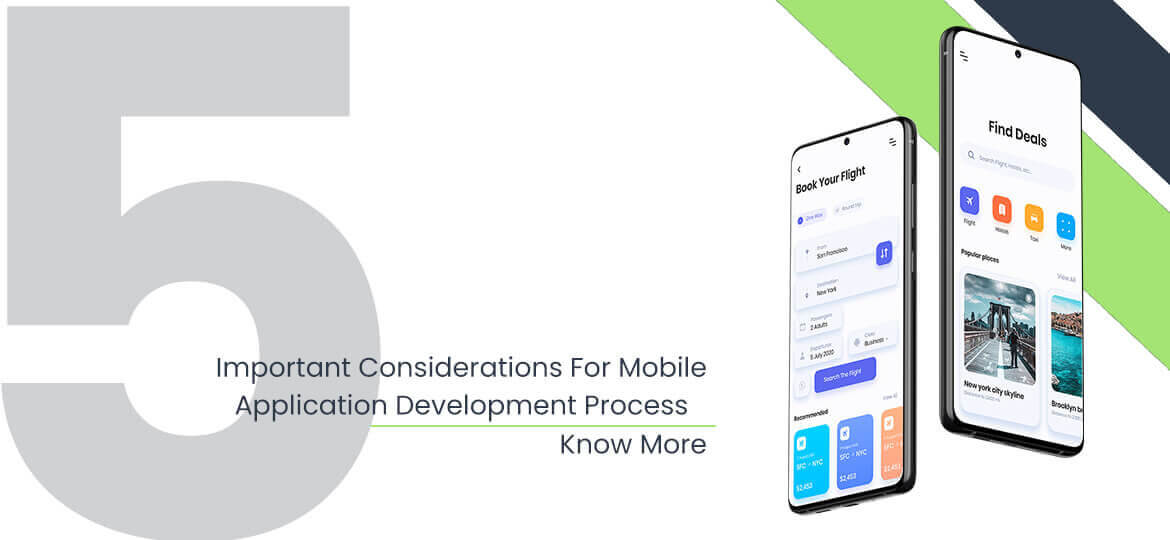Mobile devices are used throughout today and thus increasing day by day. Mobile phones have made it easier to reach out to people. They make your life easier. They are used in almost every aspect of life. Thus, from banking to shopping nobody can work without mobile phones today. It’s like mobile phones are a boon to today’s generation. Thus, the mobile application development process should be taken seriously.
Mobile apps are a great way to improve your product or service to reach more users and improve traffic to your site through mobile devices.
As more and more web traffic comes from mobile devices, it is really essential to give users access via mobile devices. Users expect this all the time. The site and mobile application engineers and specialized draftsmen must be additional mindful while outlining and composing new frameworks. End clients don’t have that tolerance to continue gazing towards their phone screens for over three seconds sitting tight for your page to stack. They need ultra-quick applications.
The question arises “How to make your application cater to the need for huge traffic and still be super-fast, smooth, and efficient?” Without any doubt, the answer is that this can be achieved with the right planning and building of a mobile app that is worth it. There are a few things that need to be considered for the mobile application development process.
Mobile App Development Process: Step-By-Step Guide
Establishing Goals And Objectives (Research)
All applications start with an idea, it is the first step of the development process. Convert that idea into a solid basis of application. Make sure your initial analysis includes real demographics, motivations, patterns of behavior, and goals for your buyer character. Now, try to think about the lifecycle of your client, once its characteristics are immobilized. Make your little research and substantial reflection before moving to the next phase. And another important part of this phase is analyzing the competition. A detailed study of the implementation of its competitor will help you determine which features are missing in your application so that you could include them in your application, to make it stand out.
Wireframing
The next step is to document an application framework for understanding future functionalities. Although time is not on your side right now, actually making detailed sketches of the intended product helps you discover usability problems. Sketching does much more than just tracing steps. It can be a powerful tool for communication and collaboration. When finished drawing, Wireframing help refines ideas and organize all design components in the right way. You can overcome any technical limitation that is in the process of developing the back-end at this early stage. Look for differences to include your brand, focus on user experience, and consider how to use a mobile app against a mobile website.
Also Read:
Defining The Backend
You may have a clear understanding of the visual effects. However, you must also take into account whether the back-end systems will be able to support application functionality. To find out if the idea that their application technique is feasible you need to get access to public information through public API outsourcing. An application, depending on its format and the platform, has different needs. Through this, the team may have different ideas for the application. At this point, brainstorm a bit, ask questions and check the status.
Prototype
Build a quick prototype. Fast is the keyword here. You can not truly understand the tactile experience until and unless you touch the application and see how it works and flows. Therefore, build a prototype that receives the application concept of a user’s hands as soon as possible to see how it works for the most common use case. Use extensive rough wireframes for this phase. This will help you see if you are taking things in the right direction. Include stakeholders in this process, allowing them to touch the prototype will give their opinion, and put it into practice in their work.
Designing The App
After this step, you can jump to coding. However, app design is a crucial task. Your user experience (UX) design architects interact between design elements, while the user interface (UI) built the look and feel of the application. Thus, you need to be very precise when it comes to having a UX designer. This is a multi-step process. Thus, depending on your application and the scope of the proposed budget, the design team can complete the design in one afternoon or you can take a team and a lot of hours. The more your product varies, the greater the possibility that the original UX be.
App Development
The development phase usually begins soon. When an idea takes some maturity in the conceptual stage, a working prototype is developed by development teams. It validates functionality, and assumptions, and helps give an understanding of the scope of work. The application development goes through a series of stage. In the initial stage, the main functionality has not been proven. In the second stage, most of the proposed functionality is incorporated. After the errors in the second stage are set, the application will move to the deployment phase in which it is ready for launch. This step is mainly for backend development.
Testing
Developing mobile applications, it’s a good idea to test early and often. Doing this will keep your costs low end. The farther you go into the development cycle, the more expensive it becomes to correct errors. See the original design documents and planning, while the construction of several test cases. The application must be tested for ease of use, compatibility, security, interface controls, stress, and performance. It should also be tested for functional testing. In user acceptance testing to find out if your mobile application works for its intended users or not. Once your application passes the test of user acceptance, you know your solution “works”. And later make your app available for beta testing, either through registration of previously identified groups or an open call for participants. The feedback received from beta users to help you figure out whether the application functions are working well in a real-world situation.
Launching
Your application is ready to ship. Choose a day and type a formal launch. Lat and the most important step of the mobile application development process. Stores for different applications, and launching an application policy are different. And keep in mind, this is not the end. Application development does not stop at launch. As your application gets into the hands of users, feedback spilled, and you should make use of feedback in future versions of the application. Usually, as soon as the first version of the application is released, the development cycle begins again. Make sure you have the resources to keep their product. Apart from investing in the construction of a digital product money note, it is long-term.
5 Considerations For Mobile Application Development Process
- Name a few little things which can totally change the approach, avoid months of extra work and save loads of effort and money?
- What is the kind of things which the experts rather care about now than later?
- What is the kind of things which the experts rather care about now than later?
Connect With Cloud-Based Systems
Cloud Computing is an undying necessity that sits back and lets you enjoy the flavors of a successful functionality integrated with your application. The main benefit of using cloud computing is its scalability. Cloud computing allows your business to easily upscale or downscale according to its IT needs when necessary. Most providers of cloud services allow you to increase your existing resources to accommodate the increasing business needs or changes. This will support business growth without having costly measures and bringing about change to their existing IT systems.
Component-Based Development Methodologies
Component-Based Software Development (CBSD) is a useful concept. It helps facilitate the creation of flexible, reliable, and reusable systems. Such a paradigm relies on the concept of building an application component that is meant to have reusable pieces of code for your programming languages. It is advisable that each of the components should have some clearly defined functionality and must be independent of the whole system. Also, within a well-defined architecture, these components should contact each other using interfaces APT.
Test-Driven Development
A TDD methodology is a very crucial computer programming (Test Driven Development) that should not be overlooked. This method of computer programming consists of small iterations. This method involves writing test cases covering the new functionality. Next, you write production code that could necessarily make the test pass and finally you refactor the code to make it more maintainable. Running Unit Tests in Test Driven Development gives you fast confirmation of whether your code behaves as it should or not.
Backend as a Service (BaaS)
Baas (Backend as a Service) is another approach that should have many applications and web developers need to follow. It helps in connecting their applications to backend cloud storage and offers some common features, such as user management, push notifications, and social networking integration. BaaS also offers some features that mobile users demand in their applications.
Also Read:
MVC Framework
Another essence for a successful support system and complete test third is the MVC framework ie Model View Controller. Working on a scalable architecture MVC, developers can separate the business logic, access databases, and presentation. Therefore, it helps facilitate code maintenance and reduces the cost of customer maintenance ends at the time.
The successful implementation of mobile application development is a challenge. It involves performance and quality optimization and on top of that the functionality of the application. Mistakes with slow programs and bullets adversely affect the return on investment and can ultimately damage your company’s reputation. Software development is done to do simple things in the simplest way, but that requires a lot of complexity within its supporting infrastructure.
Wrapped Up
In today’s time, making a mobile app for mobile devices is not precisely rocket science. However, a successful mobile application development process involves all extensive pre-planning.
Building your mobile application could be as easy as opening the IDE, throwing a couple of things together, doing a quick round of testing, and submitting it to store applications, all work is done in half a day.
FAQs
What are the factors affecting cost in Mobile App Development?
List of Factors affecting App Development costs:
Updates and Maintenance
Design and Functionality
Features and Testing
Hosting and Security
Development Team
Building Platform
App UI/UX


![10 Best Budgeting Apps Like Mint (2024)[35]](https://echoinnovateit.com/wp-content/uploads/2024/04/10-Best-Budgeting-Apps-Like-Mint-202435.png)
